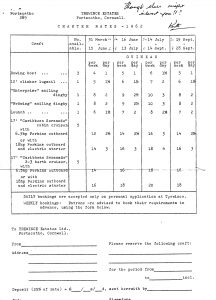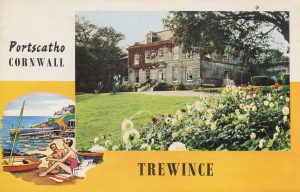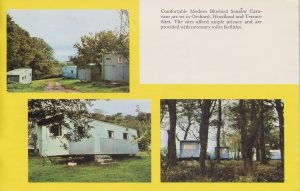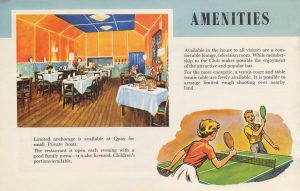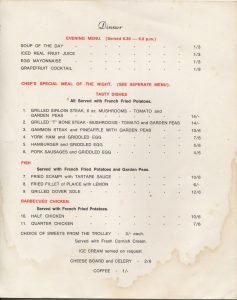Recollections from a past visitor
Gordon Fox shared a few memories with us after looking at the pictures of the old pontoon. “The remains of it were still there in the sixties and there was a wooden boat shed containing old canoes and rotting life jacket detritus with some clinker built boats upside down mostly rotten, one of which wasn’t too bad, ok for calmish seas and we used to row to St Mawes in it until the following year when my Dad bought a British Seagull outboard engine to use on it until after another year or two it became unseaworthy and started to fall apart. He then hired a safer good Dory sea boat to put the outboard on and we stuck with that type of boat until going for a lot faster inflatable with higher powered outboard.”The boat shed was still there in 1985 when we arrived at Trewince but it was washed into the water by a landslide onto the Quay one winter. It had seen better days by then. It made a good bonfire!
Gordon went on to say: “Our family and friends holidayed at Trewince for many happy years because we loved the people and the area and we were great friends with managers Jim and Jean Wilde and their daughter Sally. First time was as a child was in a chalet. Coach Cottage, Quay cottage stays started when my father bought a Hutchinson Nautisport inflatable with a Volvo Penta outboard that zipped it along at about 30 knots. It did for fishing, shopping trips to Falmouth and St Mawes, beach and pub/restaurant runs. So the car stayed virtually immobile for two weeks which suited my Dad as he drove for his living as a commercial truck salesman, and because there’s no breathalyzers on the water. As an adult I used to meet up with my family and groups of friends there when I was on leave serving in the RAF in Germany, then later at Brize Norton. The last time I stayed at Trewince was to camp up for a few days after backpacking the Cornish Coastal Path from St Ives in the late 80s or early 90s meeting up with my sister, brother in law and young nephew. There was drama one night as a caravan went up in flames in the woods and the PT firefighters had been in the pub first, but they sorted it and nobody was injured. Superb place.”
Gordon might be interested in seeing this old list of Charter rates from 1962:

